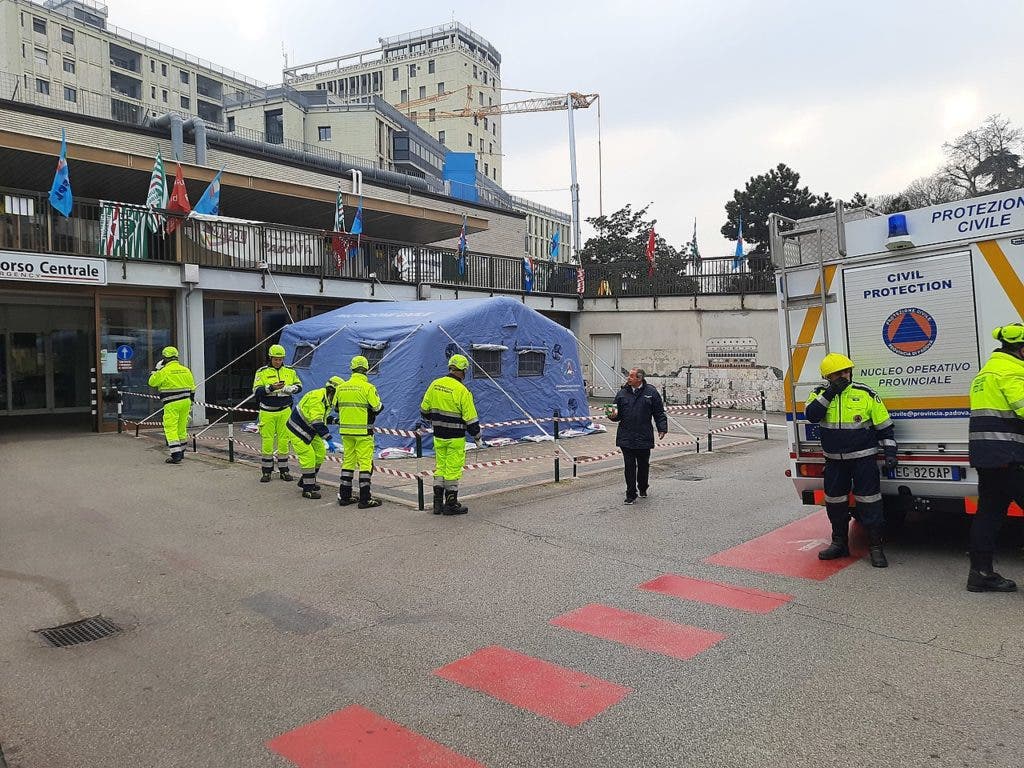
After China, Italy is the hardest-hit country by the novel coronavirus pandemic, having experienced over 35,000 confirmed cases and nearly 3,000 deaths as of March 19 — and the situation is rapidly spiraling.
Doctors and medical staff in Italy are facing immense pressures as they battle the virus in war-like conditions. They not only have to face interminable shifts and stress but also face the risk of getting sick themselves while treating patients.
According to a report released on Wednesday by Gruppo Italiano per la Medicina Basata sulle Evidenze (GIMBE), at least 2,629 health workers have been confirmed positive with SARS-CoV-2, the coronavirus that causes the COVID-19 respiratory illness.
This figure represents 8.3% of all cases in the peninsula, two times over the sick medical staff than in China, where the outbreak first started. A study published in JAMA Network Open found that infected medical staff in China made up 3.8% of all cases, resulting in five deaths. Over 60% of the infected medical staff in China was in Wuhan, the epicenter of the pandemic.
The actual number of infected medical staff is likely much higher since even the medical staff isn’t tested enough, considering that they come into contact with COVID-19 patients on a daily basis.
To make matters worse, Italy’s collapsing medical system is facing immense shortages of medical supplies. Most health workers only use simple surgical face masks that have no proper filters and are ill-suited against the outbreak.
The country had always relied on imports of face masks and other medical supplies, but since the pandemic is affecting every neighboring country, those that produce masks and other protective devices are now keeping them to themselves.
“We are importing medical personnel from abroad and throwing new young healthcare professionals without licenses into the fray,” GIMBE Director Nino Cartabellotta, a public health expert, told Al Jazeera. “If we don’t provide them with adequate protection, it will end up like in a war where soldiers don’t die while fighting on the battlefield, but because of lack of equipment. The more medical personnel is infected, the weaker the responsiveness of the healthcare system.”
On March 9, Italy’s health minister ordered a 50% expansion of intensive care units across the country, insisting that more intensive care beds were urgently needed in infectious disease wards.
The number of beds in Lombardy, the worst affected Italian region by COVID-10, has grown by 70% — 1,038 beds can be used to treat severe cases in the region. However, that’s still a far cry away from what would be adequate to treat nearly 17,000 confirmed cases in the region.
On Wednesday, Governor Attilio Fontana urged everyone to stay at home, claiming that “soon” Lombardy will be unable to receive new cases.
“Unfortunately the numbers of the contagion are not falling, they continue to be high,” he said. “We will soon be unable to give a response to those who fall ill,” news agency ANSA reported. “Stay at home: if you don’t understand that we’ll have to be more aggressive.”
The Italian government enacted an emergency decree on Monday allocating 3.5 billion euros to fund the crumbling health system.


